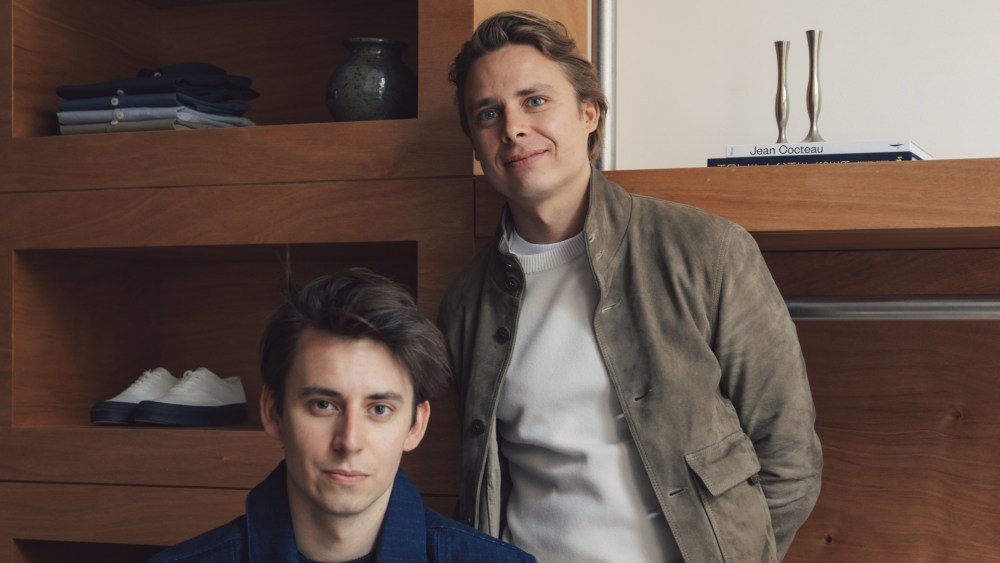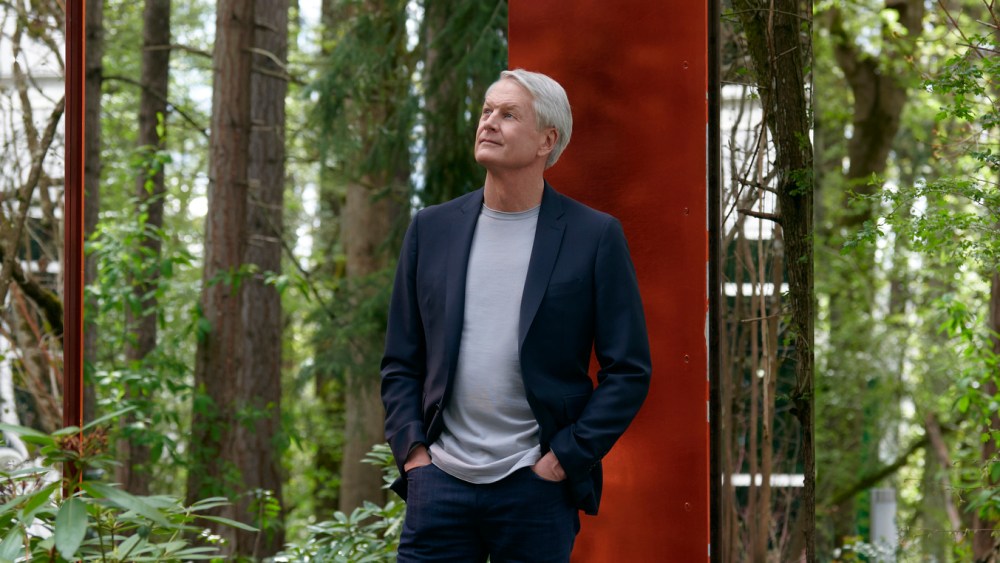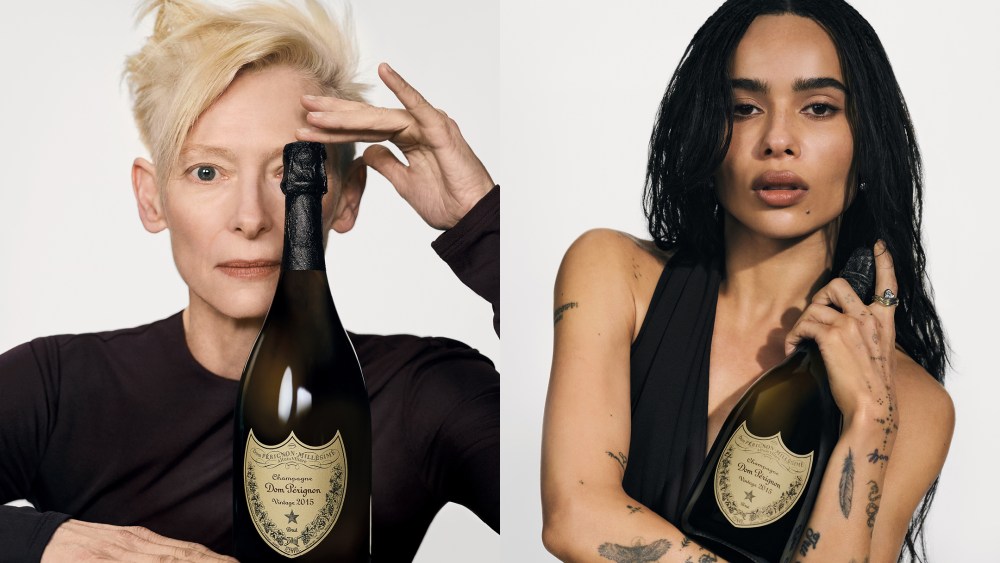PARIS — With its juxtaposition of limewash walls, volumes dressed in Okoumé wood paneling and tasteful objects befitting of a gallery, French menswear label Lafaurie is in step with the arty vibe of Paris’ Marais neighborhood.
Even the painter jackets and cuffed denim jeans in the window seem curated to echo the buzzy retail stretch.
For those who stop to take a closer look, Lafaurie isn’t an up-and-coming menswear line — it’s the new chapter of a 34-year-old brand that’s caught the attention of a budding but fervent American clientele attracted to their “arty chic” wares.

For brothers Théo and Pablo Lafaurie, the 650-square-foot unit at 56-58 Rue Vieille-du-Temple designed by Paris-based architecture studio Corto is the culmination of a seven-year pivot for this brand founded in 1991 by their father — and a bold step forward.
You May Also Like
With a warm 1990s minimalism sensibility, the store offers signed ceramics from Robert Picault and Richard Avedon’s rare 1976 “Portraits” book, along with editions of seminal French 1980s magazine Égoïste and art books.
A 1975 abstract work by French artist Jacques Soissons hangs on one wall. It inspired the color palette of a spring 2025 lineup that plays on destructured jackets, easy trousers and toothsome lightweight knitwear.
Overall, the brothers intend the brand as an homage to the previous two generations of the Lafaurie family and the art-filled Saint-Germain-des-Prés neighborhood — powered by heritage, but not constrained by it, as they put it.
A Family Affair
Evacuated during the Second World War, their grandmother and great-aunt — Mimi and Mafa as their grandsons knew them — returned to Paris and settled on Rue Guynemer, a street bordering the Luxembourg gardens. They soon built a life complete with a duck, a dog and a young child plus a business making high-end lampshades for the area’s upscale clientele.

In time, Pierre Lafaurie lived and worked in the area, although the first Emile Lafaurie store opened on Rue de Birague, a quiet street off Place des Vosges on the Right Bank. A photobooth picture of him framed in the store shows him around the same age his sons are now.
It’s his unexpected passing in 2018 that set the brothers and the brand on their current trajectory.
At the time, the company was in a rut, “not in default but going through difficulties,” said Théo Lafaurie. The team had whittled down to the founder and two commercial people, plus a dozen store staff for its seven addresses across France.
Motivated by “a network of manufacturers our father had spent over 30 years building” on the one hand and on the other “excessively well-placed stores,” the brothers decided to continue the family business.
HEC Montréal business school graduate Théo became president while Pablo graduated high school and headed to the Paris-Dauphine university to study management science.

Resilience was the name of the game in the early stages at Lafaurie but that soon gave way to decisive action. The Paris stores were overhauled in 2019, and a corner at the Printemps department store and an e-commerce shop also bowed in.
These early moves paid off with an influx of new clients.
Within a year of Théo Lafaurie’s formal arrival at the helm, the company was back on a path to growth, with the 4-million-euro mark in sight right before the onset of the pandemic. The brand also became simply “Lafaurie,” to reflect its multigenerational nature.
After the COVID-19 pandemic, Pablo Lafaurie joined the company as general manager, while his brother concentrated on image, product and commercial development.
Now, the overall team is nearing 50, including four in the studio. While the brothers declined to share sales figures, turnover has tripled in the post-pandemic years and there are now 11 stand-alone boutiques across France and three department store corners. The new store concept will be rolled out in Paris and department store corners by the end of the year.
E-commerce is a quarter of the business and department store wholesale accounts take a 5 percent share, serving as “an incredible window that leads to client acquisition for us,” said Théo Lafaurie.
Everyday Wardrobe at Prices for Everyone
What enabled the brand to build back stronger was “alternative suiting,” an offer of matching but more casually tailored daily wardrobe essentials for consumers with an appetite for painterly colors and textures.

But what really hit the spot is the accessible luxury price point of the brand. Shirts go from $125 to $170, while knitwear goes up to $290. On average, a casual jacket is around $220 while a handful of classic tailoring sees jackets priced at $515 and around $250 for trousers.
“A large part of our clients come from luxury and were tired of price increases [that put] sweaters at 2,000 euros,” said Théo Lafaurie. “15 years ago, that kind of pricing could have a pejorative connotation because people didn’t understand why but once you explain the industrial policy we have and that we work directly with craftspeople, they get it.”
It also helped when skyrocketing material prices led to an increase that went into the early-teen percentage. Nowadays, occasional single-digit increases come in when a higher-grade material comes into play.
What is fueling the company’s growth now is its international business. The U.S. has been particularly fertile ground. It accounts for 60 percent of e-commerce sales.
Caution is the North Star of their approach, even more so since U.S. President Donald Trump announced tariffs in early April.
Long before tariff talks, Lafaurie had put in place a hybrid logistic structure between France and the U.S. for shipping and returns that facilitate a 72-hour delivery promise.

Having a price perceived as accessible on the American market gives the French label confidence to navigate the tariff hurdle.
Now, the duo has plans for a pop-up later this year or early 2026, with the West Village and NoHo as areas of interest. While Théo Lafaurie said it wasn’t necessary to be a permanent retail presence in the U.S. to do business there, he’s keen to build an emotional connection with American clients, whom he perceives as putting a high value on community.
But shrewdly, Lafaurie wants to ensure a balanced international development that doesn’t lean too heavily on one particular territory.
Next in sight: Asia, with China as the first destination where they are in talks with potential partners.
“At a moment where there’s a lot of challenges, particularly for luxury, we really feel there’s a card to play [there],” particularly in light of evolving expectations from Chinese high-end clients, said Pablo Lafaurie.



